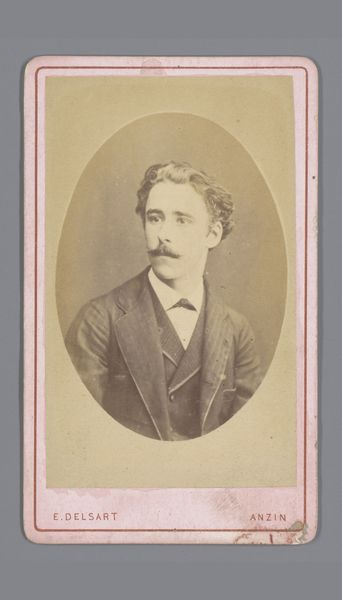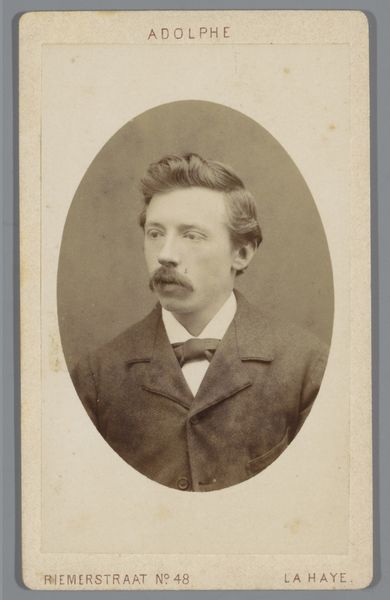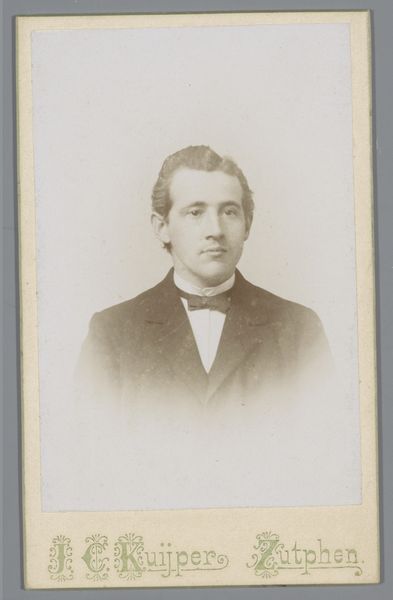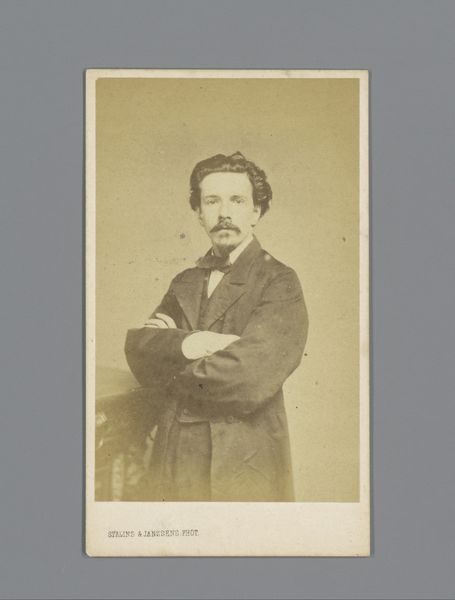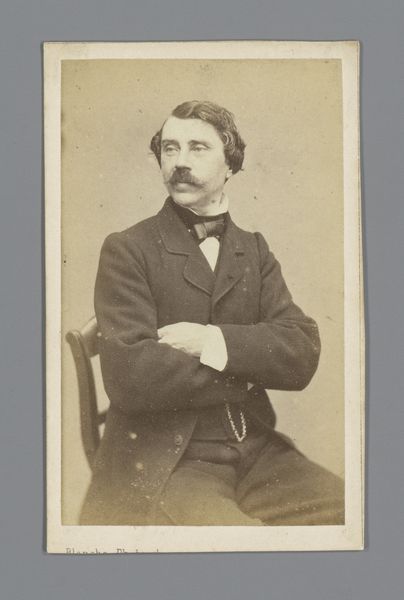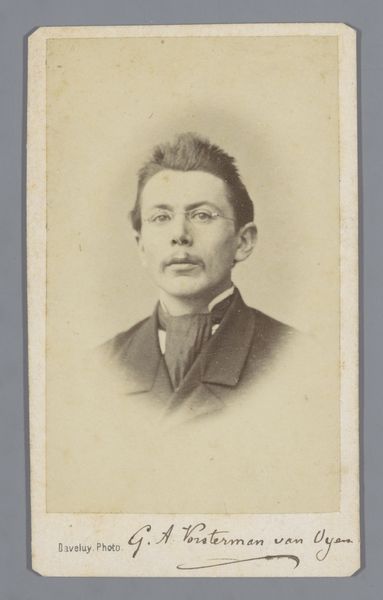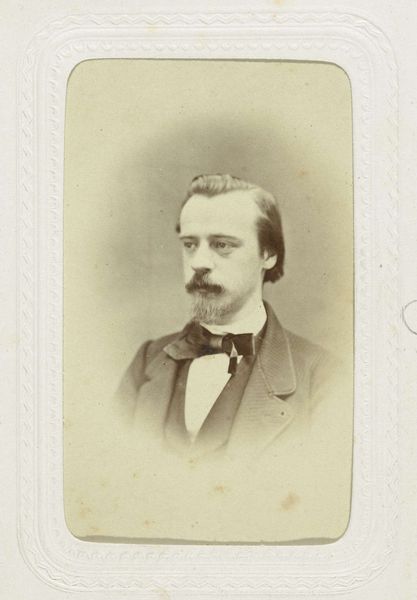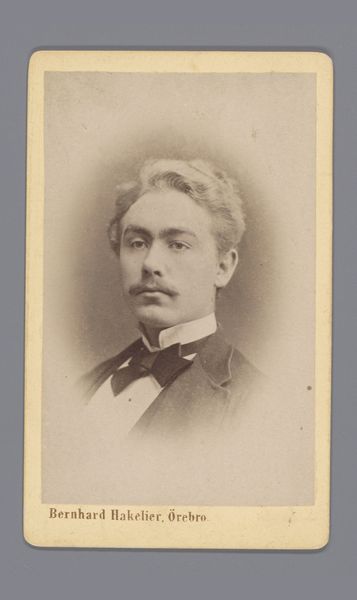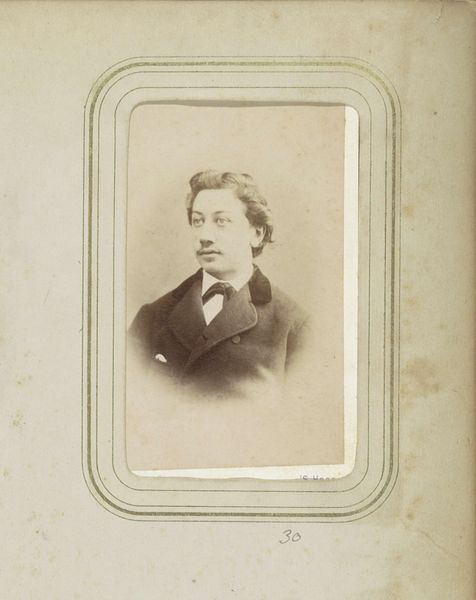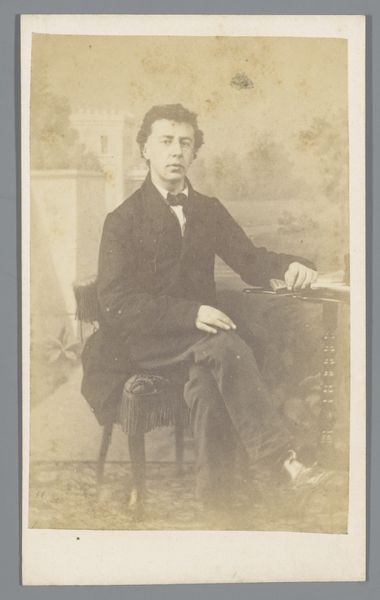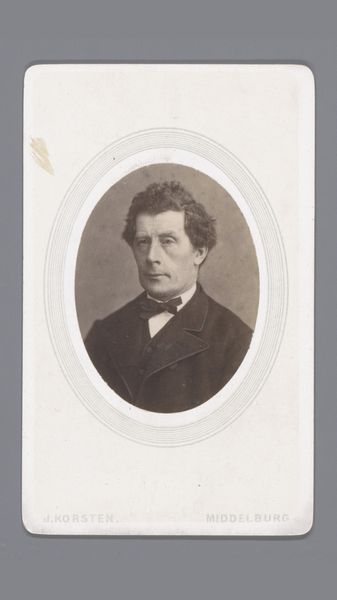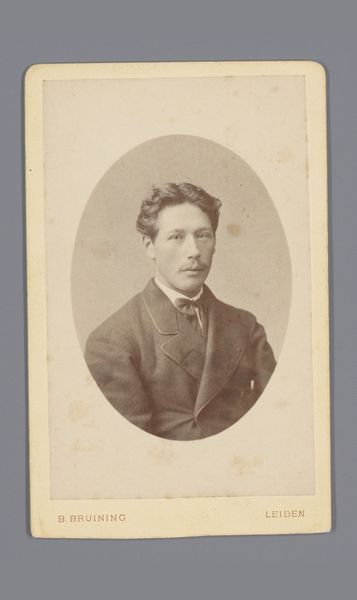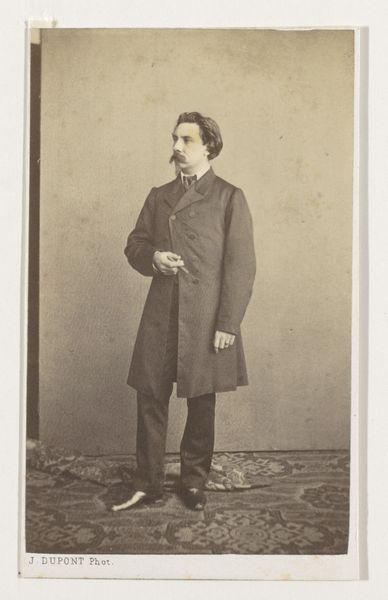
Dimensions: height 105 mm, width 62 mm
Copyright: Rijks Museum: Open Domain
Curator: Here we have a captivating albumen print from the mid-19th century, somewhere between 1861 and 1874, by Albert Greiner. It is called "Portret van een onbekende man", or Portrait of an Unknown Man, from our own collection here at the Rijksmuseum. Editor: It’s striking how immediate the portrait feels, even today. His slightly dishevelled hair and intense gaze almost convey a romantic angst. Do you feel that? Curator: It definitely encapsulates elements of Romanticism in its era. Daguerreotypes and albumen prints were becoming more widespread, offering a burgeoning middle class the chance to emulate aristocratic portraiture traditions. This image democratized representation. Editor: That bow tie – such a strong symbol of burgeoning middle class aspiration and status. A fascinating sartorial signal in a rapidly changing society, don't you think? How meticulously people curated their self-image even in these early photographic endeavors. Curator: Precisely! Photography allowed for controlled, reproducible self-presentation on a mass scale. Greiner was among many studios capitalizing on the desire for memorialization and social promotion. This card photograph, meant for distribution and exchange, speaks to evolving social rituals. Editor: He seems both defiant and vulnerable to me. Look at those eyes... the iconography seems clear to me: this fellow wished to be remembered in the future. His carefully messy hair, a subtle symbol against bourgeois restraint. Curator: Interesting take. Or, was the ‘carefully messy’ look simply what could be accomplished when traveling to Greiner's Amsterdam studio? Maybe the mussed look was merely due to limitations in technology. Editor: It’s true that limitations always influence art... but within those, symbolic intent often finds its way through. Considering the cultural shifts of the 1860s and 70s – scientific advances challenging established norms, alongside artistic experimentation—perhaps this 'unknown man' embodies that tension beautifully. Curator: A compelling thought. What this photograph ultimately gives us, whether accidental or deliberate, is a complex and ultimately unresolvable image of nineteenth-century society. Editor: Exactly! So, even an anonymous portrait reveals silent stories if you pay enough attention.
Comments
No comments
Be the first to comment and join the conversation on the ultimate creative platform.
